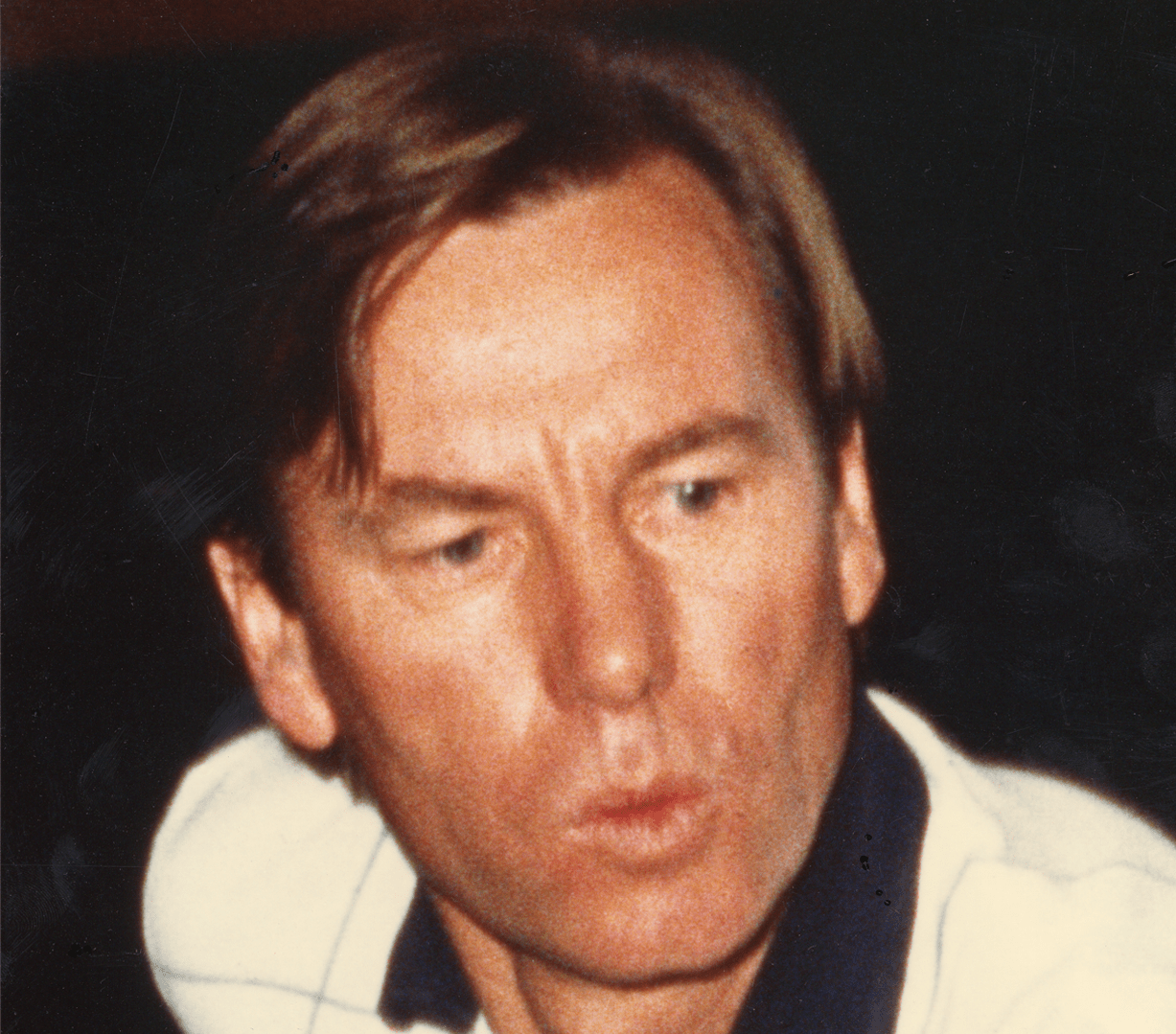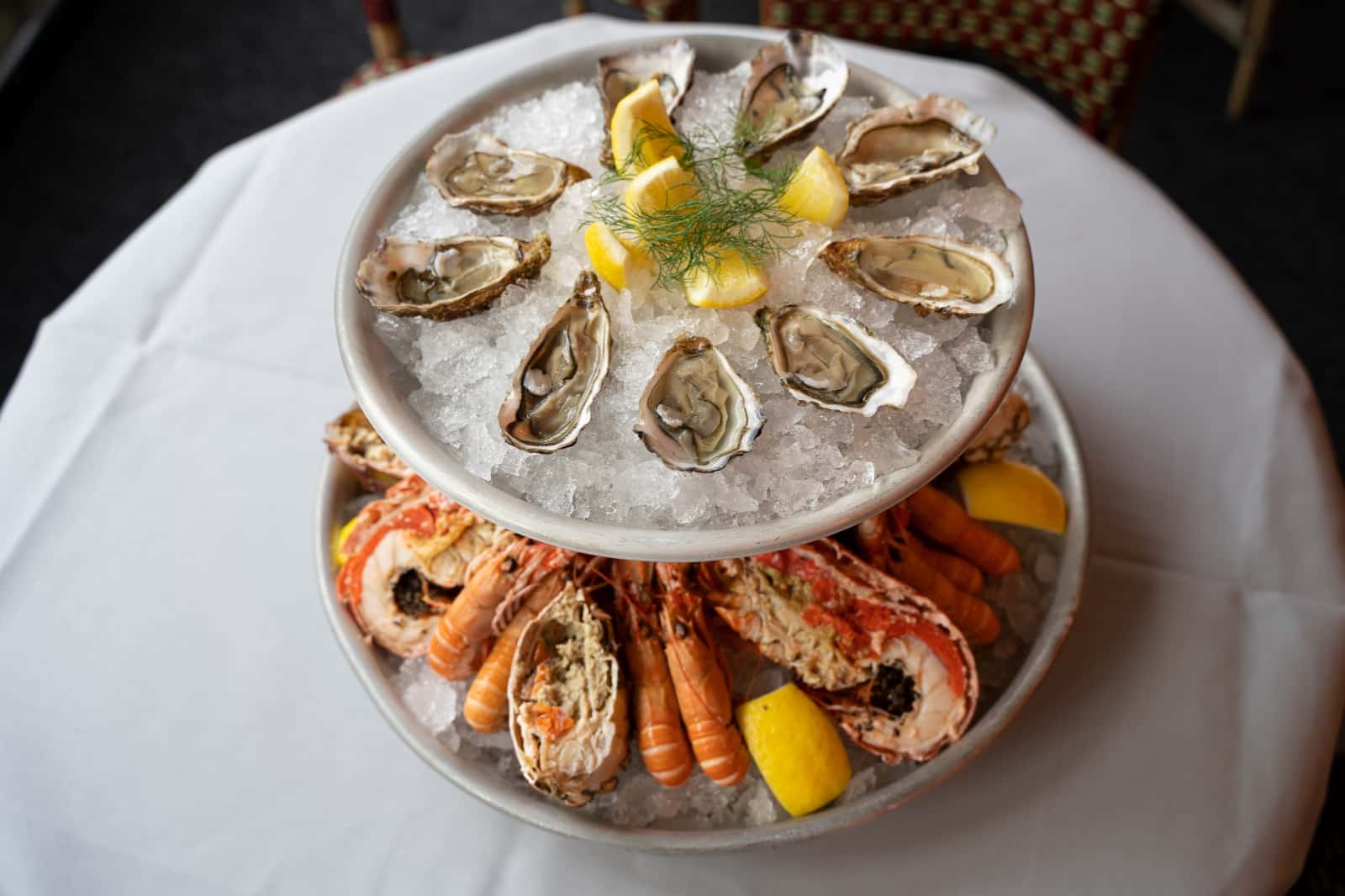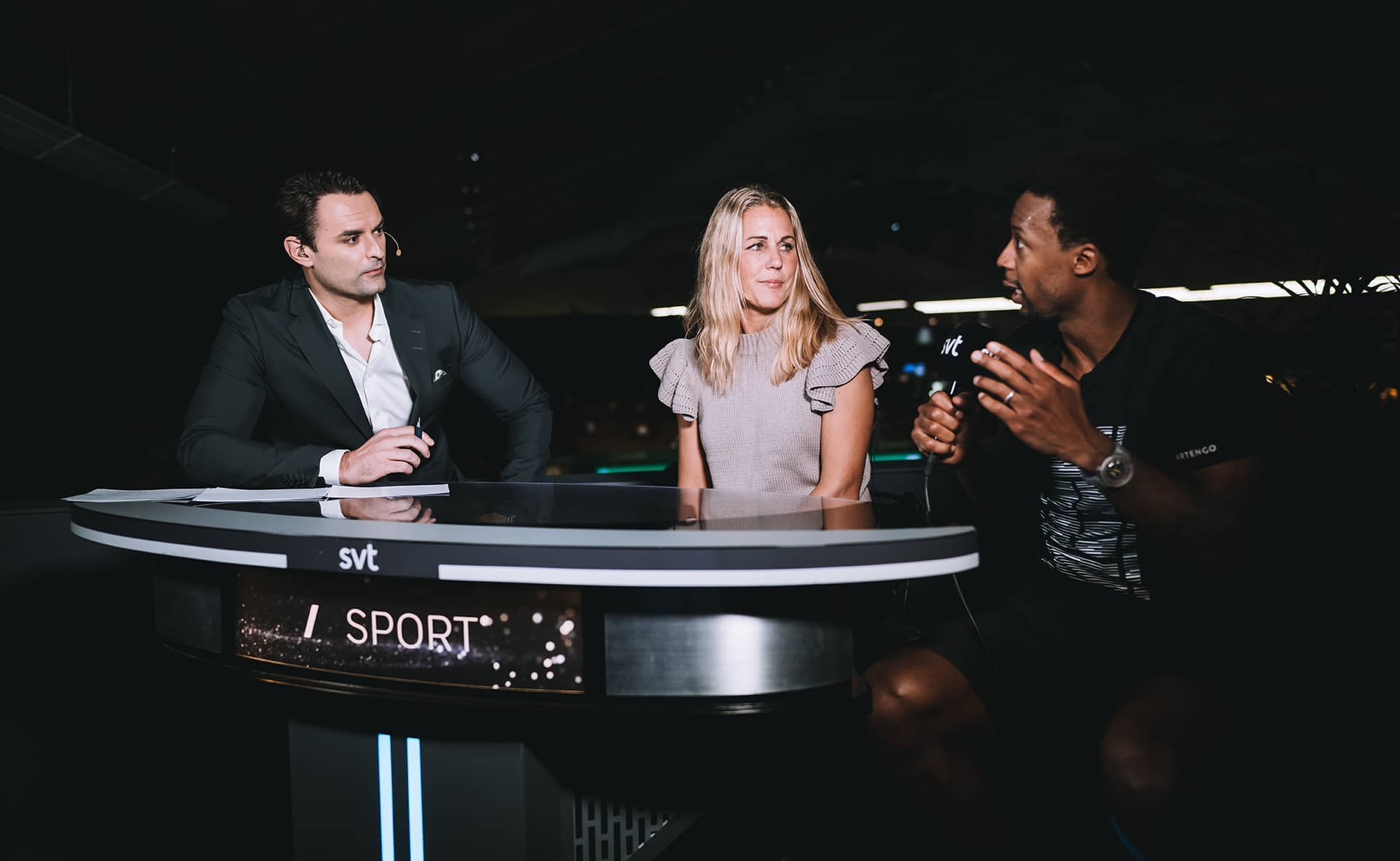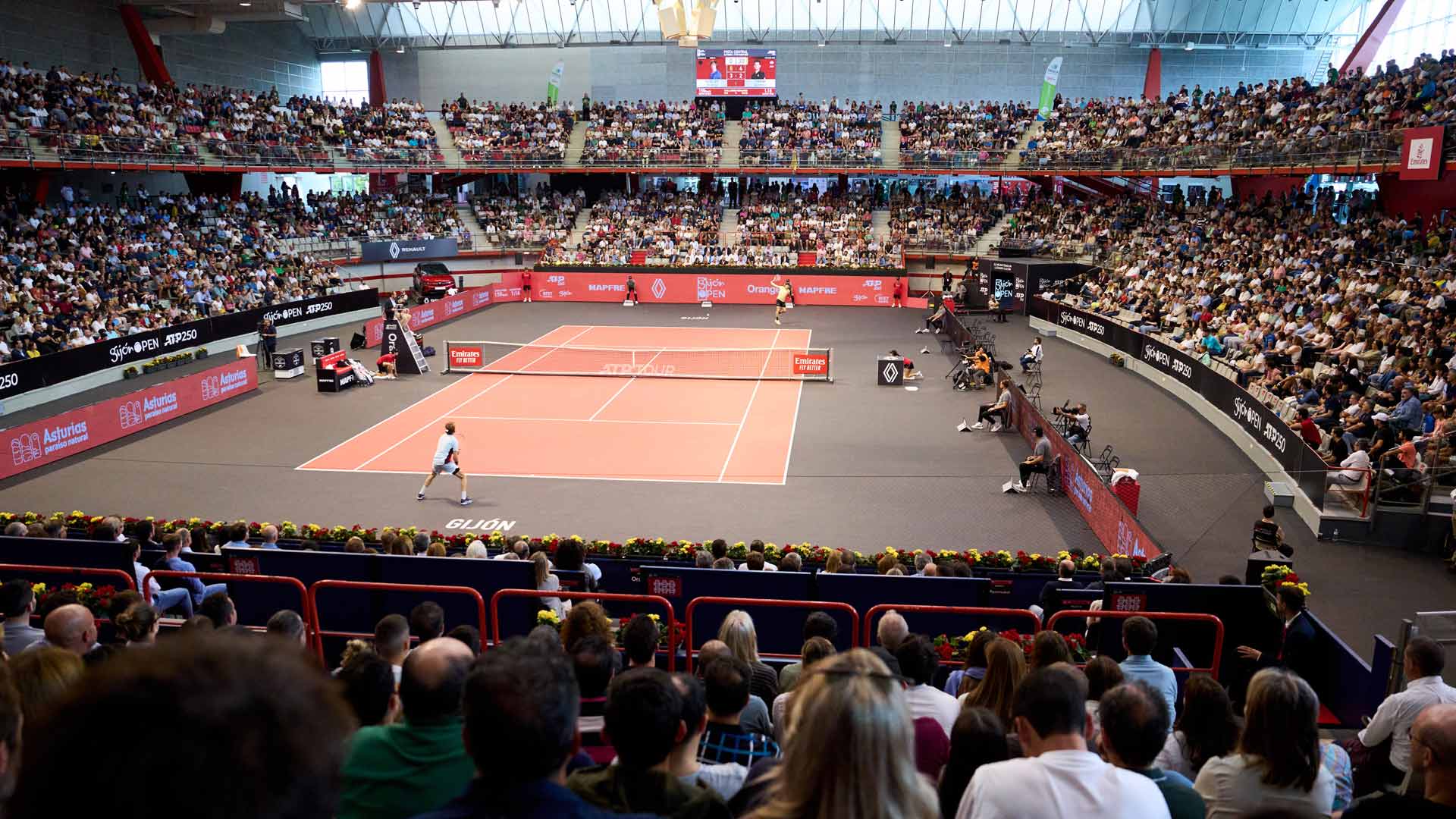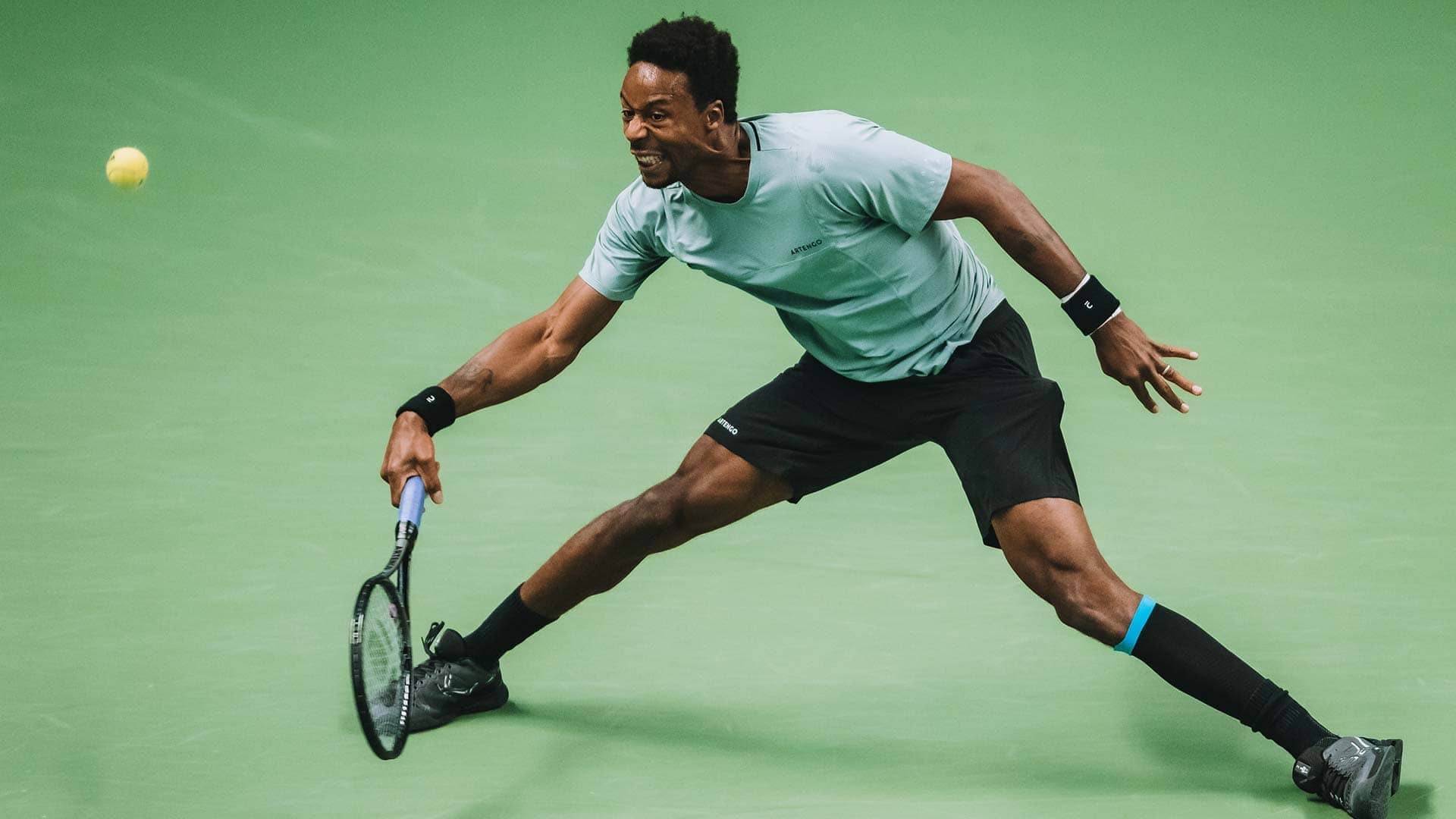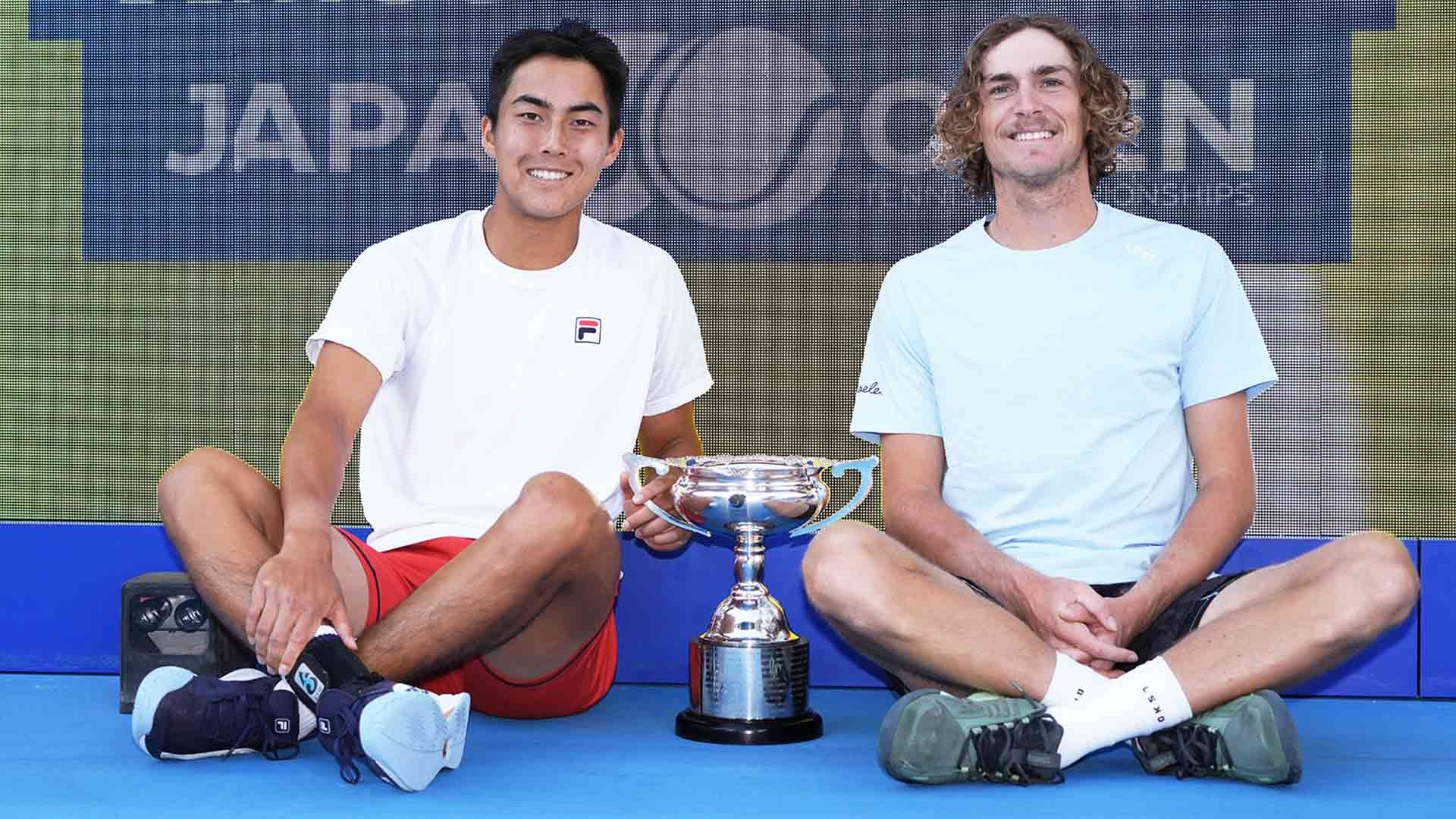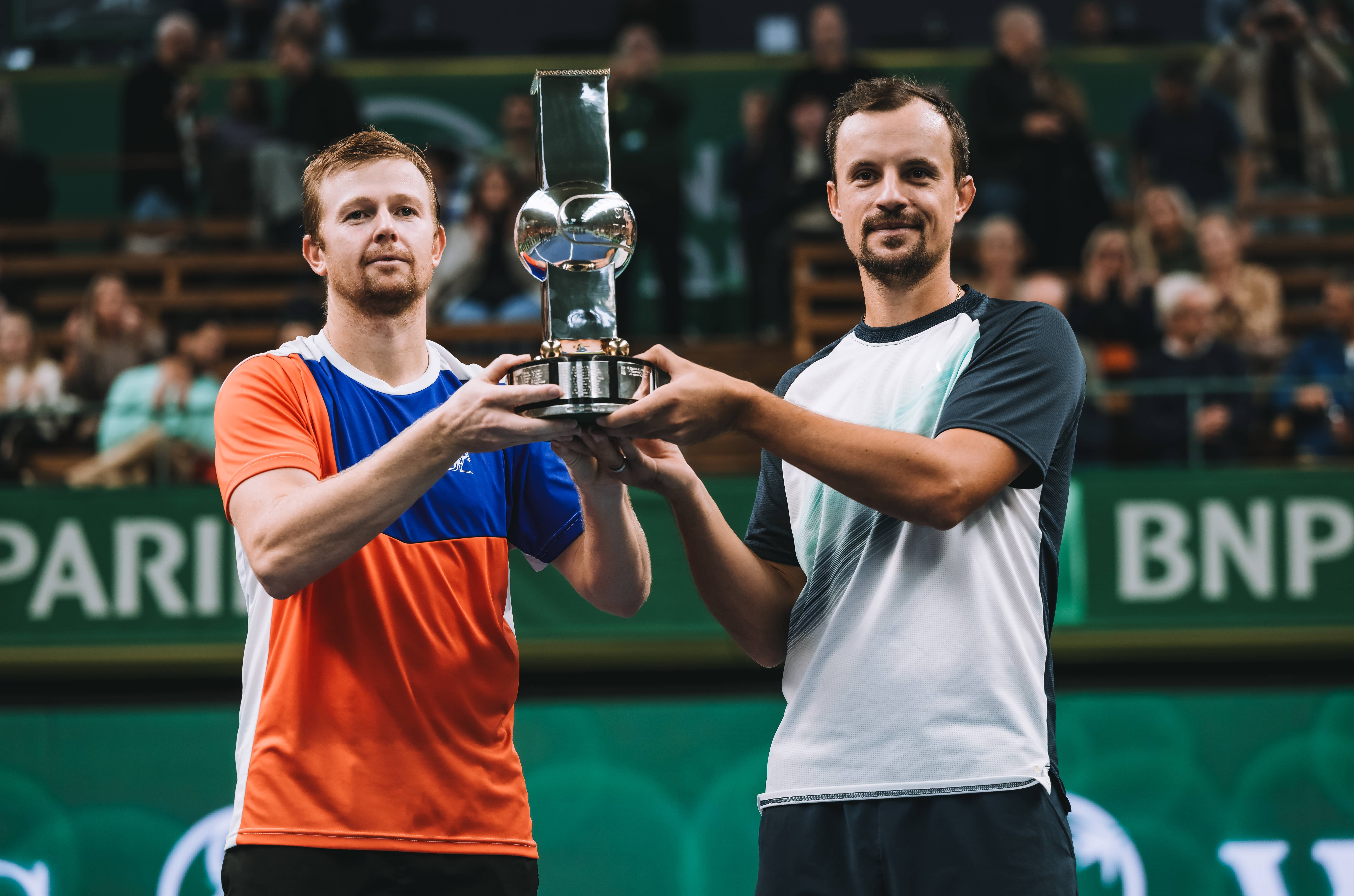1969
The entire victory prize disappeared at the pub
The Stockholm Open didn't start off well. The first tournament was scheduled to begin on Sunday, November 23rd, but the organizers had failed to inform several of the registered players, including several of the stars.
Total chaos on the first day, but after humble adjustments and skillful work with new schedules, things eventually sorted themselves out.
Sweden didn't have any notable stars in 1969, and that was, of course, a miscalculation. However, Leif Johansson somewhat redeemed the Swedish honor by taking a set from the world number one Rod Laver.
The Romanian Ilie Năstase had something of a breakthrough in the tournament, which was ultimately won by the Yugoslav Nikola Pilić. It was his first major tournament victory, and he was overjoyed. Until the bar tab arrived. He had treated the remaining competitors in Stockholm from that year's starting lineup to a dinner at Stallmästargården on the final evening and had barely a krona left from the 32,000 prize money.
1970
Smith had to work for the victory
Nikola Pilić returned to the Stockholm Open to defend his title and make off with the winner's check before his friends took him away to some lavish victory party.
But this time luck wasn't on his side. He was eliminated in the first round by a relatively unknown Australian.
Another favorite from Australia was the crowd's favorite, Ken Rosewall. He played brilliantly throughout the tournament but didn't reach the final. In the semifinals, he was defeated by the big server Stan Smith in a match that many still remember today. Smith won with 8-10, 6-2, 9-7 and was completely exhausted afterward.
However, he recovered and also won the final against his compatriot Arthur Ashe after another intense showdown.
For the Swedish part, there wasn't much for the audience to celebrate. Experienced Bosse Holmström was the only home player to advance to the second round. There, he put up a good fight but still lost to the world star Roy Emerson.
1971
Södertälje guys in the lead roles
Stan Smith, the one who had clinched victory in the 1970 Stockholm Open, triumphantly returned a year later.
He had taken the tennis world by storm throughout the season with significant successes in the Grand Slam tournaments and Davis Cup, and was a big favorite in the Royal Tennis Hall once again.
But this time, he didn't make it past the first round. He lost 7-6, 7-5 to an inspired and skillful schoolboy from Södertälje, Leif Johansson, and displayed great sportsmanship by praising his opponent and not attributing his loss to anything other than falling short.
Leif lost in the second round to a mediocre player from New Zealand, not even becoming the most talked-about Swede in the tournament. The most attention was garnered by veteran Jan-Erik Lundqvist, who made a comeback and filled the hall, and another Södertälje lad who took a set from the experienced Yugoslav Franulović.
That youngster's name was Björn Borg, and he was only 14 years old at the time.
1972
The future was spelled Björn Borg
Björn Borg attracted crowds to the Royal Tennis Hall. At just barely 15 years old, he had made his Davis Cup debut during the summer and was, of course, a headliner in the Stockholm Open.
And he did well. He outplayed both the Finn Pekka Saila and the Spaniard Andrés Gimeno, and was well on his way to the quarterfinals after winning the first set against the American Andrew Pattison. But then Pattison's experience took over, and that was the end of Borg's 1972 tournament.
The organizers took it in stride. A boy who, at the age of 15, could challenge the world elite was a promising guarantee for the tournament's future. Björn Borg attracted both the audience and sponsors.
The amiable Stan Smith avenged himself and won the tournament without much trouble. It was really only in the first match that he encountered any serious opposition, and that came from Ove Bengtson. Ove had a really good day but made a few too many double faults to win in the long run. Smith's final score was 6-7, 7-5, 6-4.
1973
Best when it counted – except in the final
The schedule was dramatic for Björn Borg. First, he faced a fellow countryman, Birger Andersson, but then it was likely to be Ilie Năstase – and if by chance he won that match, Nikola Pilić, and in the semifinal the new star Jimmy Connors.
But the entire plan nearly fell apart. Birger surprised with steady play, won the first set, and pushed Björn to a tiebreak in the second. However, the tiebreak was uneventful, 6-0 to Borg.
The match against Năstase was a thriller. Long, exhausting rallies and a third set spiced up by unsportsmanlike behavior from the Romanian, who felt the audience disturbed his serve.
When Björn finally won the set 7-5, the crowd got even louder.
He also overcame Pilić – another tough three-setter – and in the first real battle of many between Borg and Connors, Björn emerged as the victor. It was a real battle, and the score was 6-4, 3-6, 7-6. Clearly, the young man had something extra, that ability to excel in crucial moments.
However, the tough matches took a toll in the final. American Tom Gorman won in a third-set tiebreak and might still boast today that he defeated Björn Borg in a Stockholm final.
1974
Thigh injury hindered Björn
Björn Borg was a big name now, at 17 years old, and a favorite to win the Stockholm Open. Last year's winner, Tom Gorman, was foot injured and withdrew.
But fate had other plans. Borg strained a thigh muscle against Brian Gottfried in the third round and was clearly hampered, even though he defeated Manuel Orantes 6-1, 6-1 in the quarterfinals.
His injury was more apparent in the semifinals, where he lost to Dutchman Tom Okker. The deciding set ended 5-7, but afterward, he didn't blame anything. Okker, however, admitted he wouldn't have stood a chance if Borg had been healthy.
This was confirmed in the final, where he was outplayed by Arthur Ashe and lost 6-2, 6-2. Okker simply wasn't on Björn Borg's level.
There was disappointment at the Royal Tennis Hall, but a Swedish player received warm applause. It was Jan-Erik Lundqvist, who played his final elite match when he was eliminated by Ove Bengtson in the second round.
1975
Panatta charmed and won
Never before had the Stockholm Open seen such a star-studded tournament. The seedings were led by last year's winner, Arthur Ashe, followed by Jimmy Connors, Guillermo Vilas, Björn Borg, Ilie Năstase, Jan Kodeš, and Roscoe Tanner in that order.
But none of them claimed the winner's check. It was won by the Italian Adriano Panatta, who found a perfect balance in his game and won the hearts of the audience. Particularly in the final against Jimmy Connors, who had eliminated the hometown favorite Borg in the semifinals. Panatta showcased his full repertoire, winning easily 6-4, 6-3, and the entire arena rose to its feet in jubilation.
It wasn't just Panatta's style that was appreciated; Connors had become somewhat unpopular due to his arrogant behavior both on and off the court. And, of course, he had eliminated Björn Borg, who everyone wanted to see win.
For this year, a women's tournament was also introduced on a trial basis. British superstar Virginia Wade won the final against the Frenchwoman Françoise Dürr with a score of 2-1.
1976
No one had counted on Cox
Could the tournament be even more star-studded than the previous year?
Indeed it could. Virtually the entire world elite was present, and both Connors and Borg were even bigger names in 1976 after a memorable final at the U.S. Open.
The dream was that they would both march through their halves of the draw in Stockholm and meet in the final. But things don't always go as planned – Borg was slightly unwell and out of form, losing in the third round to Brian Gottfried. Jimmy Connors lost a tough semifinal to Englishman Mark Cox, who found top form at the right time and outplayed Connors with varied and winning tennis.
Cox, a player no one had expected much from, actually won the entire tournament. His tactics also worked against Manuel Orantes in the final, winning 4-6, 7-6, 7-5. Even though the Spaniard led 5-3 in the deciding set and had a chance to serve out the match.
– My biggest victory, but I was so lucky. Someone up there must like me, Cox said.
1977
Borg boycotted, Johansson surprised
Björn Borg didn't appreciate how parts of the Swedish press described his performance in the 1976 Stockholm Open, so he retaliated by not entering the tournament in 1977.
It didn't affect the newspapers; it affected the organizers. And they were not pleased, especially his fellow club members at SALK. But Borg was a stubborn fellow and didn't give in.
Several other Swedish players got the chance to showcase themselves, and some of them won a few matches. The furthest went 26-year-old Kjell Johansson, who reached the quarterfinals against the experienced South African Ray Moore but lost by a narrow margin.
Moore advanced all the way to the final. But there, he fell short against American Sandy Mayer.
Mark Cox, who had won in 1976, was eliminated in the second round.
1978
Anniversary with tennis history
Björn Borg returned, as did the newest American star, John McEnroe. McEnroe had displayed both class and temperament since bursting onto the scene at Wimbledon the year before.
Everything was truly set for a public celebration, and that's exactly what happened. Borg won all his matches 2-0, and McEnroe did the same. All the way to the semifinals, where they met.
It was a very good match that didn't end as the crowd hoped. McEnroe won 6-3, 6-4, and thus Borg lost for the first time to a younger opponent. Björn was now 21, John was 19. Both were very polite at the press conference – Borg predicted a bright future for McEnroe, while McEnroe said Borg was still the best in the world.
But in Stockholm, the young American was the best. In the final, his fellow countryman Tim Gullikson was helpless and lost 6-2, 6-2.
– I'll be back next year, McEnroe said.
And he was.
1979
McEnroe came, saw, and talked
Björn Borg hadn't yet won the tournament and didn't feel entirely comfortable on the fast carpet surface.
He realized it would be very difficult to beat McEnroe on that court, perhaps that's why he chose to participate in a tournament in Tokyo instead.
But McEnroe came. He came, saw, and conquered. And he talked. Talked to such an extent that he received a fair amount of criticism from both the spectators and the press. Many felt he gained advantages in an unsportsmanlike manner by constantly complaining about referees and decisions, while others simply enjoyed the spectacle.
He did win, though he had to work harder for his victories than the previous year. Particularly in the final, where his compatriot Gene Mayer won the first set 7-6 and led 3-1 in the second. However, McEnroe showcased his class and turned the match in his favor.
Swedish players didn't stand out significantly, although 16-year-old Jan Gunnarsson impressed when he gave Peter Fleming a tough match, but ultimately lost.
After a three-year hiatus, a women's class was attempted again this year. American superstar Billie Jean King, who turned 36 a few weeks after leaving Stockholm, won the final against Betty Stöve from the Netherlands.
The entire victory prize disappeared at the pub
The Stockholm Open didn't start off well. The first tournament was scheduled to begin on Sunday, November 23rd, but the organizers had failed to inform several of the registered players, including several of the stars.
Total chaos on the first day, but after humble adjustments and skillful work with new schedules, things eventually sorted themselves out.
Sweden didn't have any notable stars in 1969, and that was, of course, a miscalculation. However, Leif Johansson somewhat redeemed the Swedish honor by taking a set from the world number one Rod Laver.
The Romanian Ilie Năstase had something of a breakthrough in the tournament, which was ultimately won by the Yugoslav Nikola Pilić. It was his first major tournament victory, and he was overjoyed. Until the bar tab arrived. He had treated the remaining competitors in Stockholm from that year's starting lineup to a dinner at Stallmästargården on the final evening and had barely a krona left from the 32,000 prize money.
1970
Smith had to work for the victory
Nikola Pilić returned to the Stockholm Open to defend his title and make off with the winner's check before his friends took him away to some lavish victory party.
But this time luck wasn't on his side. He was eliminated in the first round by a relatively unknown Australian.
Another favorite from Australia was the crowd's favorite, Ken Rosewall. He played brilliantly throughout the tournament but didn't reach the final. In the semifinals, he was defeated by the big server Stan Smith in a match that many still remember today. Smith won with 8-10, 6-2, 9-7 and was completely exhausted afterward.
However, he recovered and also won the final against his compatriot Arthur Ashe after another intense showdown.
For the Swedish part, there wasn't much for the audience to celebrate. Experienced Bosse Holmström was the only home player to advance to the second round. There, he put up a good fight but still lost to the world star Roy Emerson.
1971
Södertälje guys in the lead roles
Stan Smith, the one who had clinched victory in the 1970 Stockholm Open, triumphantly returned a year later.
He had taken the tennis world by storm throughout the season with significant successes in the Grand Slam tournaments and Davis Cup, and was a big favorite in the Royal Tennis Hall once again.
But this time, he didn't make it past the first round. He lost 7-6, 7-5 to an inspired and skillful schoolboy from Södertälje, Leif Johansson, and displayed great sportsmanship by praising his opponent and not attributing his loss to anything other than falling short.
Leif lost in the second round to a mediocre player from New Zealand, not even becoming the most talked-about Swede in the tournament. The most attention was garnered by veteran Jan-Erik Lundqvist, who made a comeback and filled the hall, and another Södertälje lad who took a set from the experienced Yugoslav Franulović.
That youngster's name was Björn Borg, and he was only 14 years old at the time.
1972
The future was spelled Björn Borg
Björn Borg attracted crowds to the Royal Tennis Hall. At just barely 15 years old, he had made his Davis Cup debut during the summer and was, of course, a headliner in the Stockholm Open.
And he did well. He outplayed both the Finn Pekka Saila and the Spaniard Andrés Gimeno, and was well on his way to the quarterfinals after winning the first set against the American Andrew Pattison. But then Pattison's experience took over, and that was the end of Borg's 1972 tournament.
The organizers took it in stride. A boy who, at the age of 15, could challenge the world elite was a promising guarantee for the tournament's future. Björn Borg attracted both the audience and sponsors.
The amiable Stan Smith avenged himself and won the tournament without much trouble. It was really only in the first match that he encountered any serious opposition, and that came from Ove Bengtson. Ove had a really good day but made a few too many double faults to win in the long run. Smith's final score was 6-7, 7-5, 6-4.
1973
Best when it counted – except in the final
The schedule was dramatic for Björn Borg. First, he faced a fellow countryman, Birger Andersson, but then it was likely to be Ilie Năstase – and if by chance he won that match, Nikola Pilić, and in the semifinal the new star Jimmy Connors.
But the entire plan nearly fell apart. Birger surprised with steady play, won the first set, and pushed Björn to a tiebreak in the second. However, the tiebreak was uneventful, 6-0 to Borg.
The match against Năstase was a thriller. Long, exhausting rallies and a third set spiced up by unsportsmanlike behavior from the Romanian, who felt the audience disturbed his serve.
When Björn finally won the set 7-5, the crowd got even louder.
He also overcame Pilić – another tough three-setter – and in the first real battle of many between Borg and Connors, Björn emerged as the victor. It was a real battle, and the score was 6-4, 3-6, 7-6. Clearly, the young man had something extra, that ability to excel in crucial moments.
However, the tough matches took a toll in the final. American Tom Gorman won in a third-set tiebreak and might still boast today that he defeated Björn Borg in a Stockholm final.
1974
Thigh injury hindered Björn
Björn Borg was a big name now, at 17 years old, and a favorite to win the Stockholm Open. Last year's winner, Tom Gorman, was foot injured and withdrew.
But fate had other plans. Borg strained a thigh muscle against Brian Gottfried in the third round and was clearly hampered, even though he defeated Manuel Orantes 6-1, 6-1 in the quarterfinals.
His injury was more apparent in the semifinals, where he lost to Dutchman Tom Okker. The deciding set ended 5-7, but afterward, he didn't blame anything. Okker, however, admitted he wouldn't have stood a chance if Borg had been healthy.
This was confirmed in the final, where he was outplayed by Arthur Ashe and lost 6-2, 6-2. Okker simply wasn't on Björn Borg's level.
There was disappointment at the Royal Tennis Hall, but a Swedish player received warm applause. It was Jan-Erik Lundqvist, who played his final elite match when he was eliminated by Ove Bengtson in the second round.
1975
Panatta charmed and won
Never before had the Stockholm Open seen such a star-studded tournament. The seedings were led by last year's winner, Arthur Ashe, followed by Jimmy Connors, Guillermo Vilas, Björn Borg, Ilie Năstase, Jan Kodeš, and Roscoe Tanner in that order.
But none of them claimed the winner's check. It was won by the Italian Adriano Panatta, who found a perfect balance in his game and won the hearts of the audience. Particularly in the final against Jimmy Connors, who had eliminated the hometown favorite Borg in the semifinals. Panatta showcased his full repertoire, winning easily 6-4, 6-3, and the entire arena rose to its feet in jubilation.
It wasn't just Panatta's style that was appreciated; Connors had become somewhat unpopular due to his arrogant behavior both on and off the court. And, of course, he had eliminated Björn Borg, who everyone wanted to see win.
For this year, a women's tournament was also introduced on a trial basis. British superstar Virginia Wade won the final against the Frenchwoman Françoise Dürr with a score of 2-1.
1976
No one had counted on Cox
Could the tournament be even more star-studded than the previous year?
Indeed it could. Virtually the entire world elite was present, and both Connors and Borg were even bigger names in 1976 after a memorable final at the U.S. Open.
The dream was that they would both march through their halves of the draw in Stockholm and meet in the final. But things don't always go as planned – Borg was slightly unwell and out of form, losing in the third round to Brian Gottfried. Jimmy Connors lost a tough semifinal to Englishman Mark Cox, who found top form at the right time and outplayed Connors with varied and winning tennis.
Cox, a player no one had expected much from, actually won the entire tournament. His tactics also worked against Manuel Orantes in the final, winning 4-6, 7-6, 7-5. Even though the Spaniard led 5-3 in the deciding set and had a chance to serve out the match.
– My biggest victory, but I was so lucky. Someone up there must like me, Cox said.
1977
Borg boycotted, Johansson surprised
Björn Borg didn't appreciate how parts of the Swedish press described his performance in the 1976 Stockholm Open, so he retaliated by not entering the tournament in 1977.
It didn't affect the newspapers; it affected the organizers. And they were not pleased, especially his fellow club members at SALK. But Borg was a stubborn fellow and didn't give in.
Several other Swedish players got the chance to showcase themselves, and some of them won a few matches. The furthest went 26-year-old Kjell Johansson, who reached the quarterfinals against the experienced South African Ray Moore but lost by a narrow margin.
Moore advanced all the way to the final. But there, he fell short against American Sandy Mayer.
Mark Cox, who had won in 1976, was eliminated in the second round.
1978
Anniversary with tennis history
Björn Borg returned, as did the newest American star, John McEnroe. McEnroe had displayed both class and temperament since bursting onto the scene at Wimbledon the year before.
Everything was truly set for a public celebration, and that's exactly what happened. Borg won all his matches 2-0, and McEnroe did the same. All the way to the semifinals, where they met.
It was a very good match that didn't end as the crowd hoped. McEnroe won 6-3, 6-4, and thus Borg lost for the first time to a younger opponent. Björn was now 21, John was 19. Both were very polite at the press conference – Borg predicted a bright future for McEnroe, while McEnroe said Borg was still the best in the world.
But in Stockholm, the young American was the best. In the final, his fellow countryman Tim Gullikson was helpless and lost 6-2, 6-2.
– I'll be back next year, McEnroe said.
And he was.
1979
McEnroe came, saw, and talked
Björn Borg hadn't yet won the tournament and didn't feel entirely comfortable on the fast carpet surface.
He realized it would be very difficult to beat McEnroe on that court, perhaps that's why he chose to participate in a tournament in Tokyo instead.
But McEnroe came. He came, saw, and conquered. And he talked. Talked to such an extent that he received a fair amount of criticism from both the spectators and the press. Many felt he gained advantages in an unsportsmanlike manner by constantly complaining about referees and decisions, while others simply enjoyed the spectacle.
He did win, though he had to work harder for his victories than the previous year. Particularly in the final, where his compatriot Gene Mayer won the first set 7-6 and led 3-1 in the second. However, McEnroe showcased his class and turned the match in his favor.
Swedish players didn't stand out significantly, although 16-year-old Jan Gunnarsson impressed when he gave Peter Fleming a tough match, but ultimately lost.
After a three-year hiatus, a women's class was attempted again this year. American superstar Billie Jean King, who turned 36 a few weeks after leaving Stockholm, won the final against Betty Stöve from the Netherlands.



